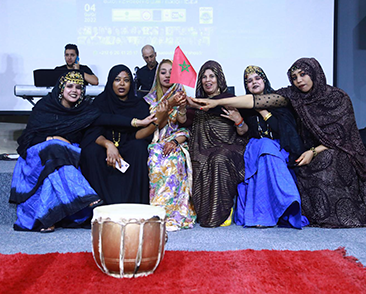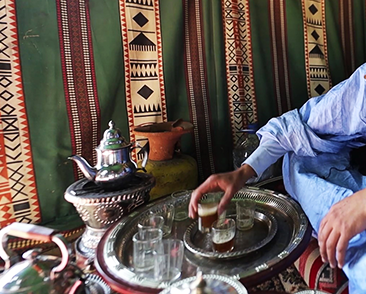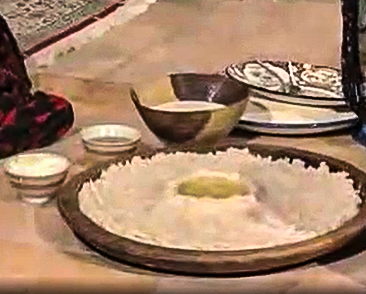
3 Things to Know About the Sahara people’s customs
In the Sahrawi way, celebrating engagements, weddings, divorce, and religious ceremonies are unique as their rich heritage and culture are reflected in their traditions and customs.
Sahrawi people are very attached to their customs and traditions, giving them great importance. This is why many traditions, including weddings and divorce, are still practiced in the Sahrawi style today.
Sahrawi weddings
The families of the bride and groom both play a crucial role in sahrawi weddings and engagements. For them, accepting a spouse for their daughter depends heavily on tribal relations.
Wedding ceremonies in Morocco’s southern provinces are celebrated in a series of ceremonies, usually for three days. The first day is for the dowry ceremony, which is called Dfou’e -- the groom prepares this ceremony to offer gifts to his fiancee.
Depending on the financial situation of the groom and his family, the dowry mainly consists of cattle, fabrics for making Mlahfa, and locally made perfumes called al-khmira. Additionally, different kinds of incense, jewelry, henna, many kilos of sugar, and some furnishings (handcrafted carpets for example) are offered. Additionally, the groom gives an amount of money for his future wife sdaq, which may reach up to MAD 100.000.
Since this dowry ceremony is very important for families in southern Morocco, it can sometimes lead to exuberant gifts because they consider it a demonstration of their tribe’s generosity and their intent to be part of the bride’s family.
On the day of the wedding, the family of the bride organizes a special ceremony that is held in a huge khaimat al-rag (tent), where the groom's family and friends collect the gifts presented to the bride.
On the first wedding night, the al-maalma styles the bride with henna, hairstyles, and traditional dresses. Then, the wedding celebrations begin at the bride’s house and usually continue for three days.
On the second night of the wedding, the bride’s friends organize a very special ceremony called al-traouegh. They hide the bride in a tent belonging to the neighboring tribe. The groom must then try to find his bride to show his love and consideration for her.
On the third and last night of the wedding, called ahchlaf, the bride unites with her husband.
Sahrawi divorce
In some Sahrawi tribes, when divorce occurs, the family and close friends of the divorced woman organize a party to support and cheer her up. In Sahrawi culture, divorce is considered as a new and brighter beginning for the woman. Women who have been married several times are sometimes given a higher dowry.
But polygamy is strictly discouraged in Sahrawi culture, even though it is allowed in Sharia. Sahrawi say this is because they “respect women.” Women's appreciation is always a top priority in Sahrawi society.
Sahrawi tea ceremony
Tea serving is a symbol of Sahrawi hospitality, generosity, and spirituality. The Sahrawi tea ceremony is one of the most special and important rituals in the Southern provinces.
Tea ceremony in Morocco’s southern provinces has rituals. The tabla (tray) on which locals put the teapot and the glasses should be made of red and yellow brass. The al-barad or abrig (teapot) is usually made of a specific type of metal called tasmint. Also present are the kuntya and a’msar, which are bowls for the tea and sugar; and the rabuz, which is a pump to keep the fire burning.
Choosing Al-Qayyam, which is the person appointed among the members of the group to prepare tea, is not a random choice. To be entrusted with this honor, they must meet certain conditions.
Because this ceremony is sacred for the Sahrawi people, they ascribe each round of tea with a symbolic name. They describe the taste of the first cup of the Sahrawi tea as “bitter as life,” and the second cup as “sweet as love,” while the third one is “soft as death.”



